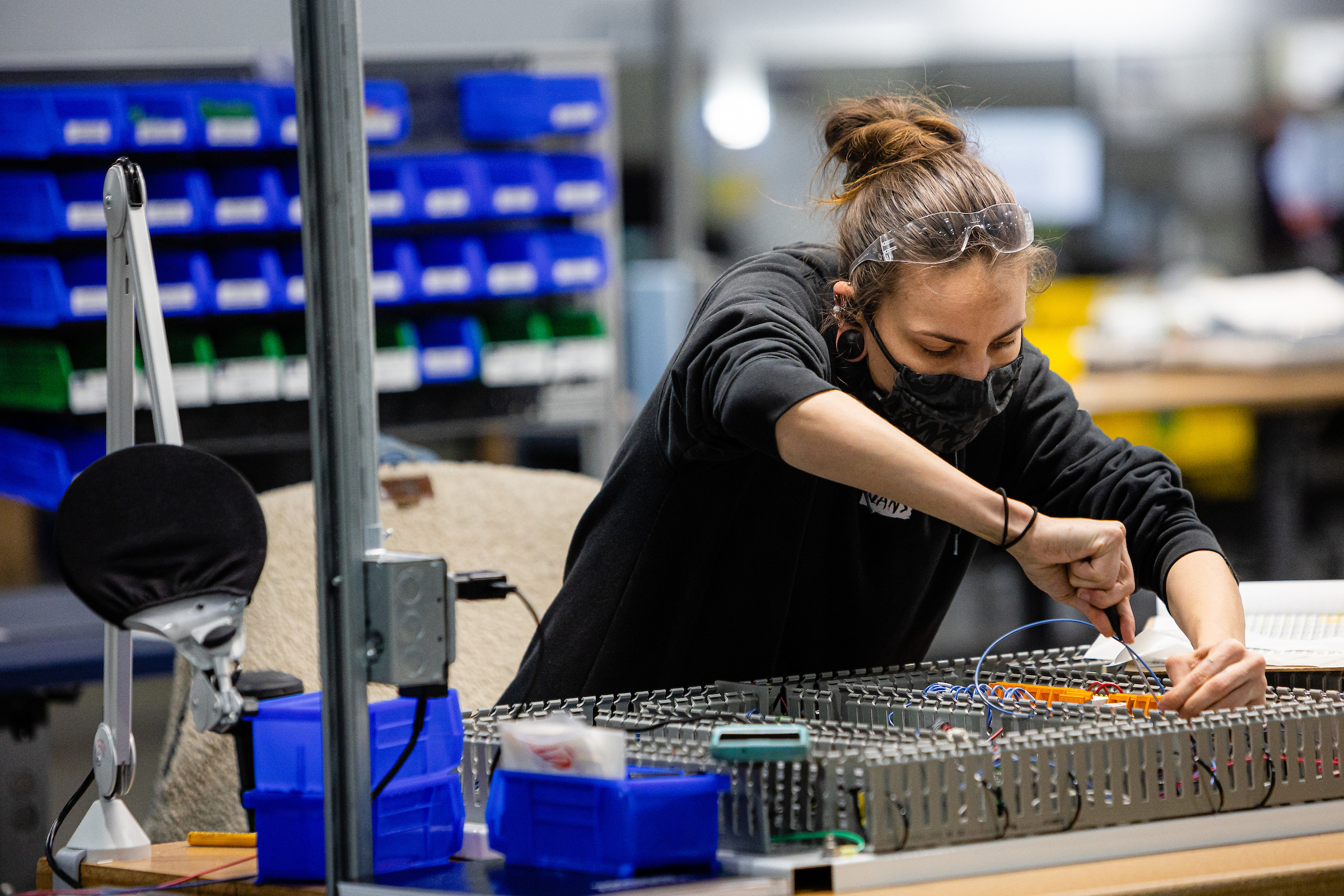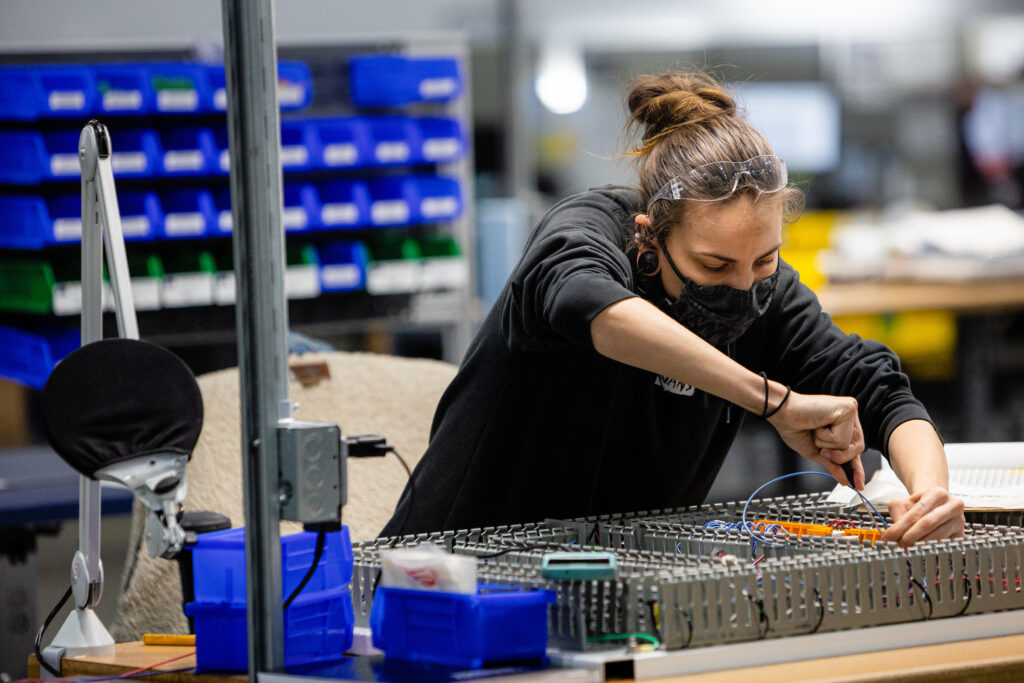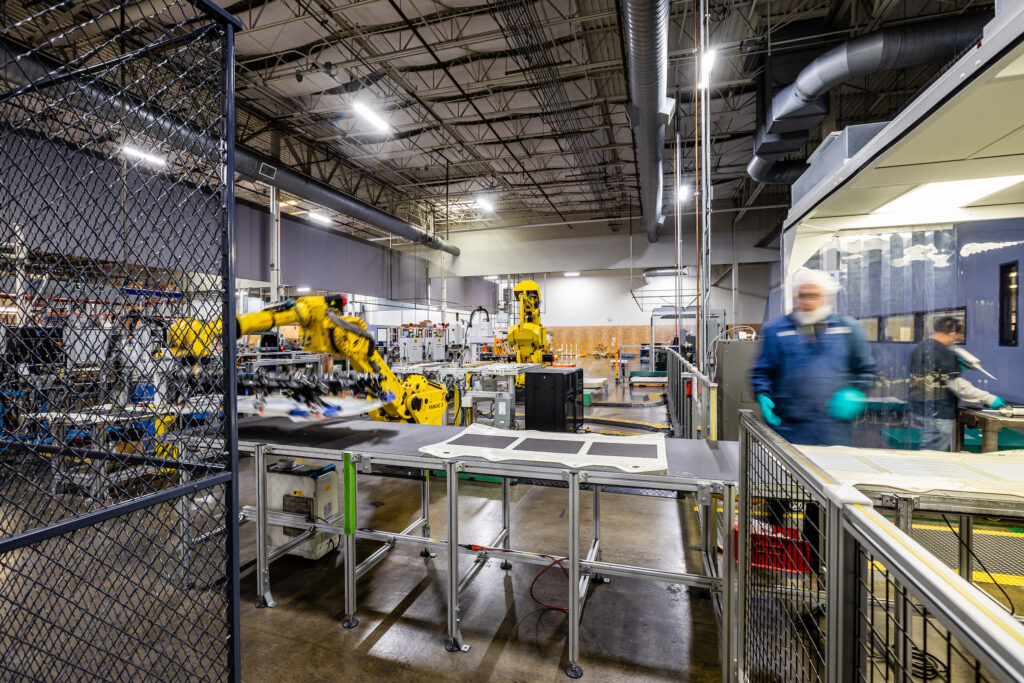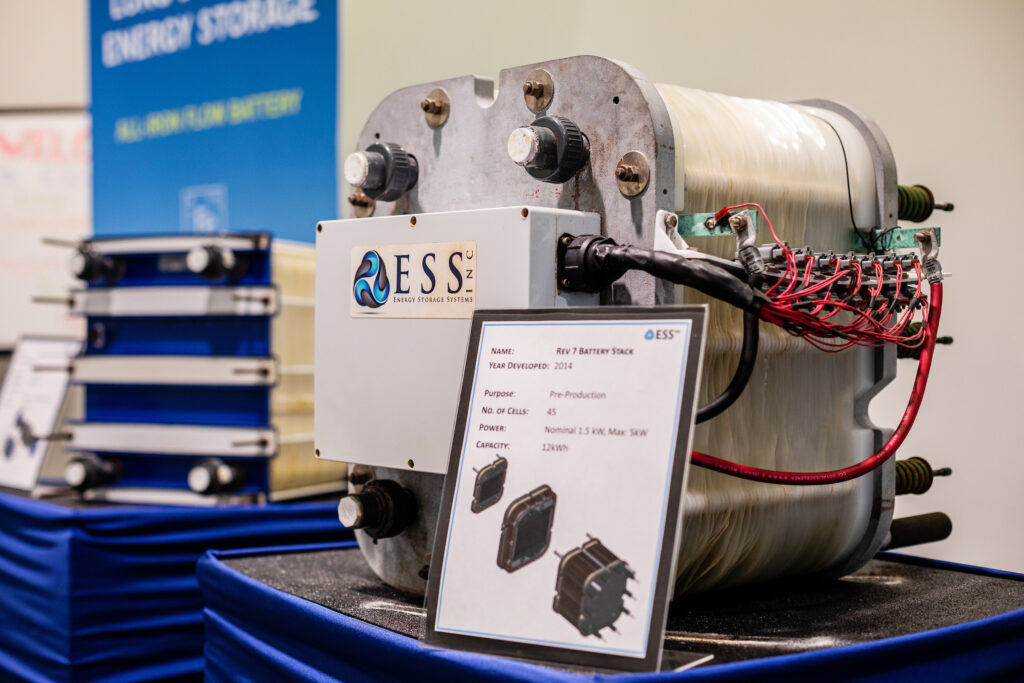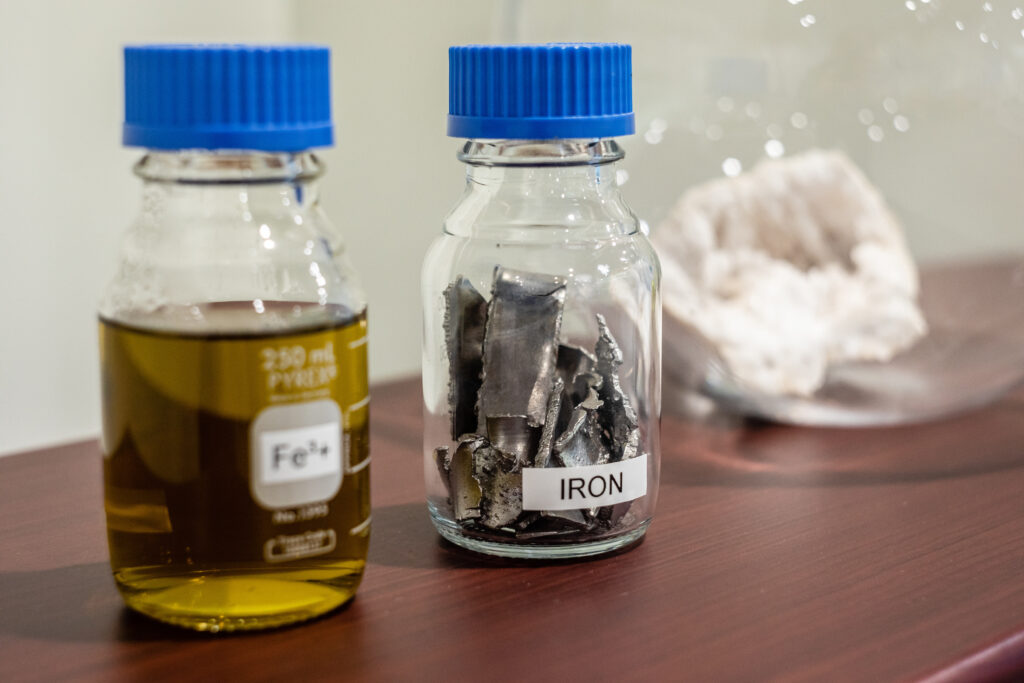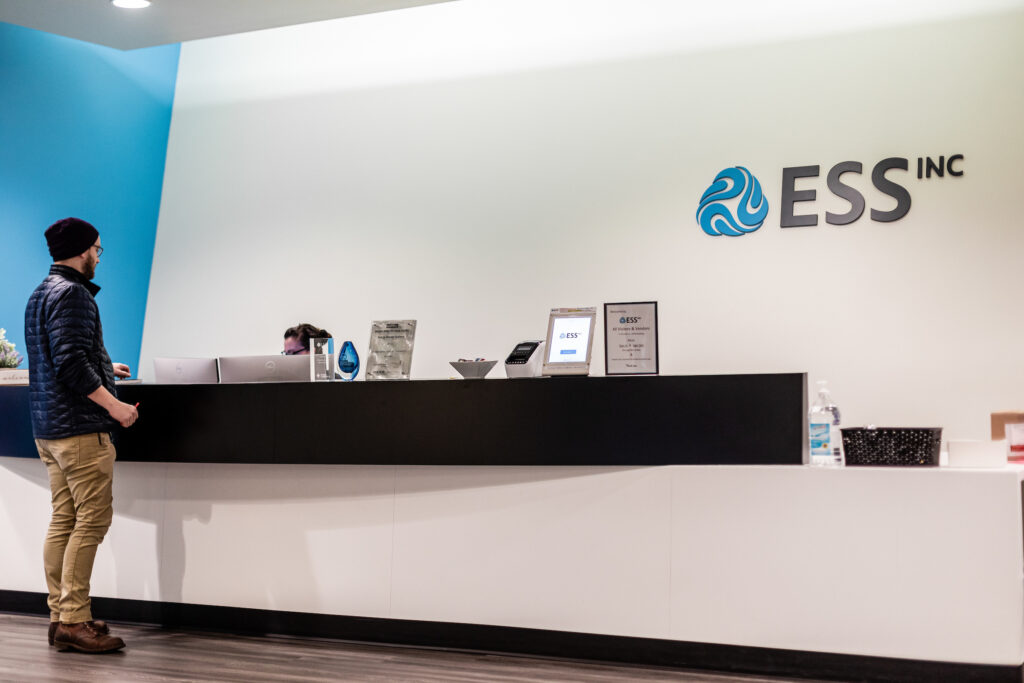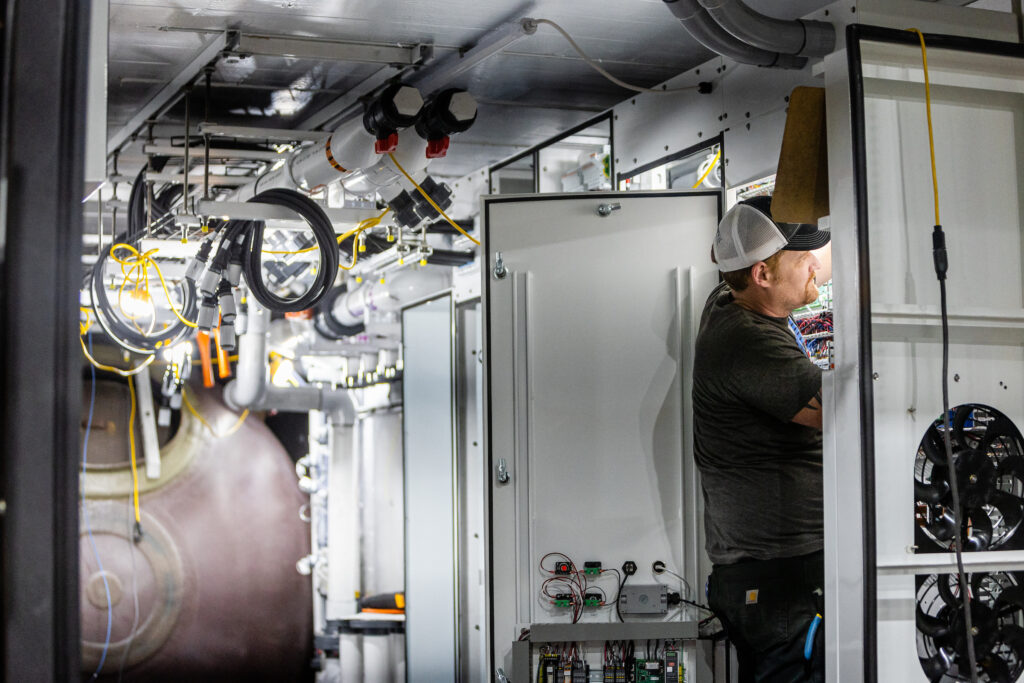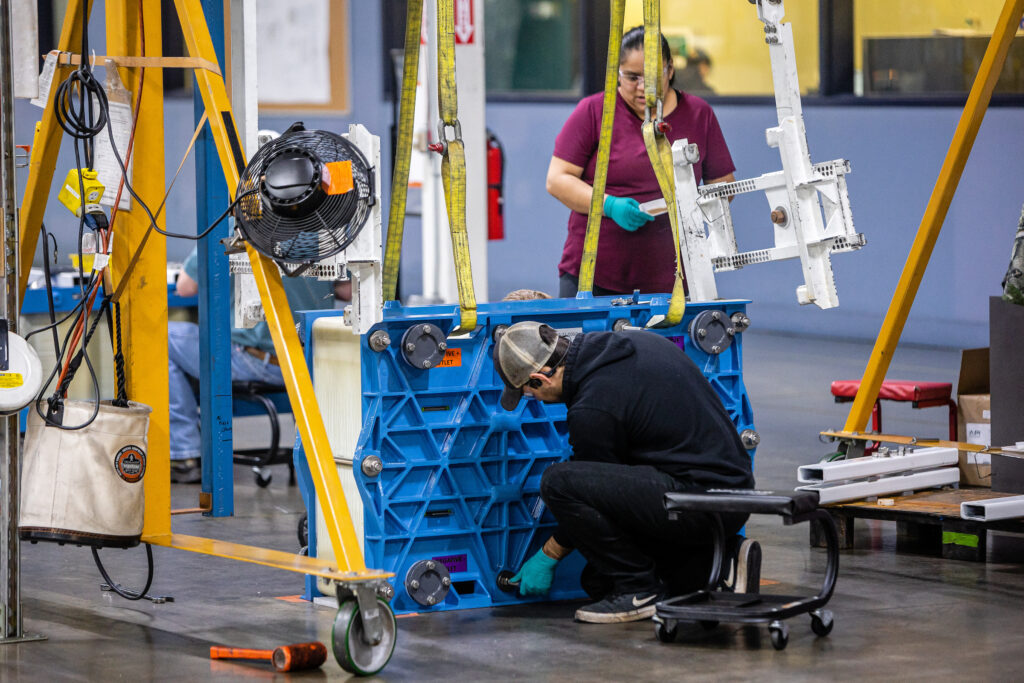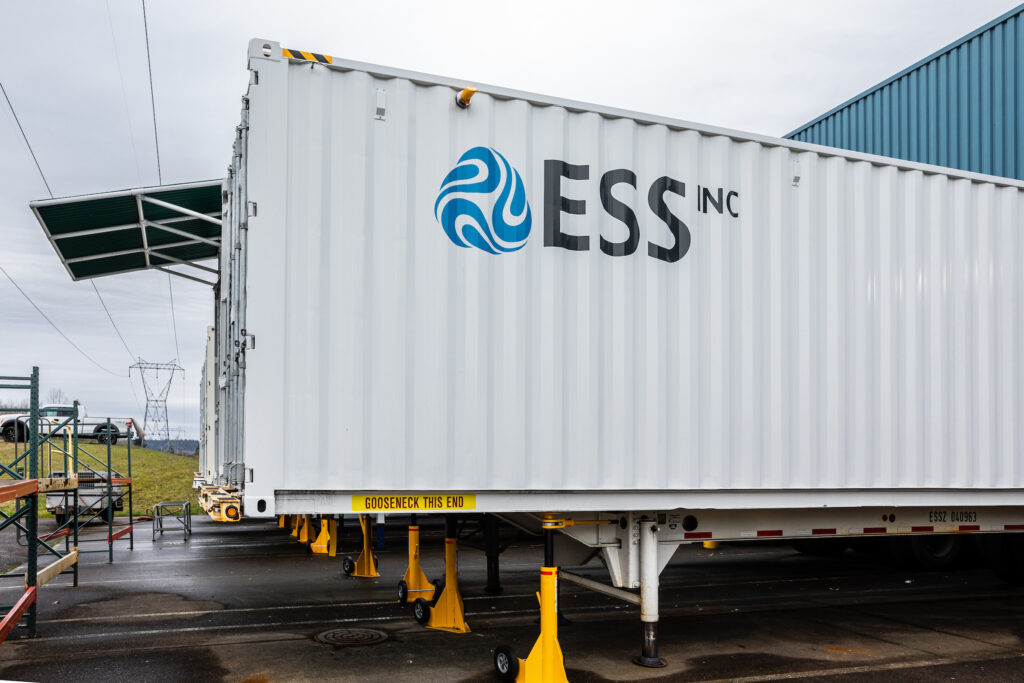Energy Storage Systems (ESS) has come a long way since 2011. Back then, co-founders Craig Evans and Julia Song had just launched the startup after putting their chemistry and engineering expertise to work on fuel cell power for several large companies. In true bootstrap fashion, the married couple was working in their garage to develop an iron-based battery that could be used to store renewable energy for the long term.
“Julia and I did some of the initial experiments in the garage until the DEA started investigating why we were getting so many chemicals shipped to our house,” Evans recalled. “At that point, we needed to get a legitimate lab.”
Their first move was to Portland State University, as part of its business accelerator program. Today, the grid-scale battery maker occupies 200,000 square feet in Wilsonville, in what used to be a Tektronix plant. But Evans said ESS will soon need to expand again. They’re adding staff quickly, growing from 50 employees in 2019 to possibly 300 by the end of 2022.
What’s behind their exponential growth? “The demand for energy storage is very, very strong,” Evans said. “We started to see renewables really take off in 2017, because of their ability to drive down cost. In 2019 and 2020, it kicked off at a whole new level. For us, it’s now a story of scaling the organization to be able to meet the demand.”
ESS’s technology uses iron, salt and water to store clean energy when the sun isn’t shining and the wind isn’t blowing. Compared to lithium ion batteries, ESS’s approach relies on resources that are inexpensive, plentiful, nonflammable and nontoxic.
“If you’re trying to decarbonize and putting a lot of renewable and sustainable products on the ground, such as solar and wind, you want to use an energy storage technology that’s also sustainable,” Evans said. “The way we developed the ESS technology, and the chemistry we used, fits that mark.”
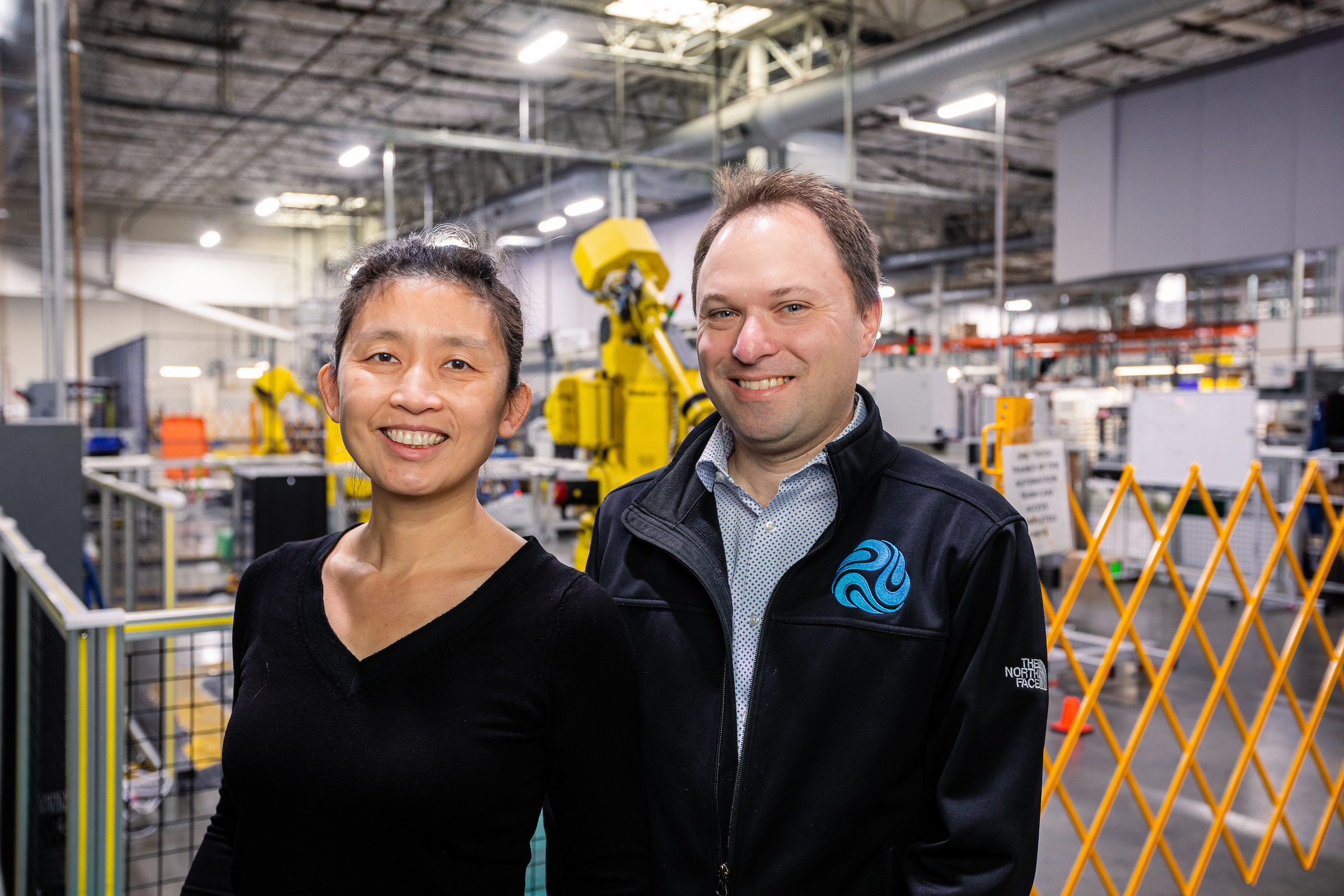 ESS Chief Technology Officer Julia Song and President Craig Evans have come a long way since they started the company out of their garage.
ESS Chief Technology Officer Julia Song and President Craig Evans have come a long way since they started the company out of their garage.
ESS’s products are a far cry from your average AA or AAA battery. The batteries ESS developed can store enough energy to power about 34 houses for 12 hours and are designed to last 25 years.
The smaller one, called the Energy Warehouse, fills a shipping container. The larger version, the Energy Center, can easily take up an acre.
“Think of the Energy Warehouse as a battery in a box,” Evans said. “The Energy Center is more like a battery in a building. It’s megawatt scale and really focused on firming up renewables. It’s used for power resiliency.”
The battery components also are easy to source around the globe, making ESS’s technology attractive as companies grapple with supply-chain squeezes. Buyers include manufacturing companies and utilities as close by as California and Oregon and as far-flung as Germany, Spain and Chile.
As ESS expands, it’s finding ways to meet its sustainability goals and keep costs low by taking advantage of programs Energy Trust of Oregon offers commercial and industrial businesses.
When the company moved to its current location in 2017, the plant had been unoccupied for several years. “For us it was a no-brainer,” Evans said of partnering with Energy Trust on its renovations. “The facility was old, and we could immediately make a difference with energy-efficiency upgrades.”
ESS replaced the lighting systems, some of which dated back to the early 1980s, with energy-efficient LEDs. The company qualified for $56,000 in cash incentives, covering more than one-third of the project’s cost. When they upgraded to an energy-efficient air compressor in 2021, the company also received a rebate of nearly $16,000, roughly two-thirds of the project cost.
The air compressor runs ESS’s automation line. Imagine a series of robots similar to the ones in an auto manufacturing plant — but assembling battery modules instead of car components. The more quickly and safely the robots can put together the modules, the faster ESS can scale its business.
The old compressor had sat dormant for years, then was running constantly as ESS worked to meet customer demand. Replacing it with an efficient model that powers on and off as needed saves ESS an estimated $5,200 a year on utility bills. It also allows the company to reliably run its automation line and expand its business.
“It goes back to our company goals and metrics,” Evans said of the upgrades. “We want to be a sustainable organization, right? So that goes to not wasting electricity. The second thing is that there’s certainly a cost savings. As an emerging organization, we want to make sure we’re careful about our margins. Lower overhead costs translate to the cost of the product. Any time we can save money on energy, it’s good for the customer.”
Learn more about energy efficiency for your industrial business with Energy Trust.
Energy Storage Systems (ESS) ha recorrido un largo camino desde 2011. Por aquel entonces, los cofundadores Craig Evans y Julia Song acababan de poner en marcha la organización después de enfocar sus conocimientos de química e ingeniería al servicio de la energía, creando las pilas de combustible para varias grandes empresas. El matrimonio trabajaba en su garaje para desarrollar una batería a base de hierro que pudiera utilizarse para almacenar energía renovable a largo plazo.
“Julia y yo hicimos algunos de los experimentos iniciales en el garaje hasta que la DEA empezó a investigar por qué nos enviaban tantos productos químicos a nuestra casa”, recuerda Evans. “En ese momento, necesitábamos conseguir un laboratorio legítimo”.
Su primer traslado fue a Portland State University, como parte de su programa de aceleración de empresas. Hoy, el fabricante de baterías a escala de red ocupa 200,000 pies cuadrados en Wilsonville, donde antes se ??encontraba la planta de Tektronix. Pero Evans afirma que ESS pronto tendrá que volver a expandirse. Están añadiendo personal rápidamente, pasando de 50 empleados en 2019 a posiblemente 300 para finales de 2022.
¿Qué hay detrás de su crecimiento exponencial? “La demanda de almacenamiento de energía es muy, muy fuerte”, dijo Evans. “Empezamos a ver que las renovables despegaron de verdad en 2017, por su capacidad de reducir costos. En 2019 y 2020, arrancó a un nivel completamente nuevo. Para nosotros, ahora se trata de escalar la organización para poder satisfacer la demanda”.
La tecnología de ESS utiliza hierro, sal y agua para almacenar energía limpia cuando no brilla el sol ni sopla el viento. En comparación con las baterías de iones de litio, el enfoque de ESS se basa en recursos que son baratos, abundantes, no inflamables y no tóxicos.
“Si intenta descarbonizar y poner en marcha muchos productos renovables y sostenibles, como la energía solar y la eólica, seguramente querrá utilizar una tecnología de almacenamiento que también sea sostenible”, dijo Evans. “La forma en que desarrollamos la tecnología ESS y la química que utilizamos lo logra”.
 La directora de tecnología de ESS Julia Song y el presidente Craig Evans han logrado mucho desde que fundaron la empresa en el garaje de su casa.
La directora de tecnología de ESS Julia Song y el presidente Craig Evans han logrado mucho desde que fundaron la empresa en el garaje de su casa.
Los productos de ESS están muy lejos de las típicas pilas AA o AAA. Las pilas desarrolladas por ESS pueden almacenar suficiente energía para alimentar unas 34 casas durante 12 horas y están diseñadas para durar 25 años. La más pequeña, llamada Energy Warehouse, llena un contenedor de transporte. La versión más grande, el Energy Center, fácilmente puede ocupar una hectárea.
“Piense en el Energy Warehouse como una batería en una caja”, dijo Evans. “El Energy Center es más como una batería en un edificio. Tiene una escala de megavatios y se centra realmente en el refuerzo de las energías renovables. Se utiliza para la resiliencia energética”.
Además, los componentes de las baterías son fáciles de conseguir en todo el mundo, lo que hace que la tecnología de ESS sea atractiva en un momento en el que las empresas se enfrentan a las restricciones de la cadena de suministro. Entre los compradores se encuentran empresas de fabricación y servicios públicos tan cercanas como California y Oregon, y tan lejanas como Alemania, España y Chile.
A medida que ESS se expande, encuentra formas de cumplir sus objetivos de sostenibilidad y mantener los costos bajos aprovechando los programas que Energy Trust of Oregon ofrece a las empresas comerciales e industriales.
Cuando la empresa se trasladó a su ubicación actual en 2017, la planta llevaba varios años desocupada. “Para nosotros fue obvio”, dijo Evans sobre la asociación con Energy Trust en sus renovaciones. “Las instalaciones eran antiguas y podíamos marcar la diferencia de inmediato con las mejoras de eficiencia energética”.
ESS sustituyó los sistemas de iluminación, algunos de los cuales se remontaban a principios de la década de 1980, por LEDs de alta eficiencia energética. La empresa se benefició de $56,000 en incentivos en efectivo, que cubren más de un tercio del costo del proyecto. Cuando en 2021 cambiaron a un compresor de aire de alta eficiencia energética, la empresa también recibió una rebaja de casi $16,000, equivalente a aproximadamente dos tercios del coste del proyecto.
El compresor de aire hace funcionar la línea de automatización de ESS. Imagine una serie de robots similares a los de una planta de fabricación de automóviles, pero montando módulos de baterías en lugar de componentes de autos. Cuanto más rápido y seguro sea el montaje de los módulos por parte de los robots, más rápido podrá ESS ampliar su negocio.
El antiguo compresor había permanecido inactivo durante años, y luego funcionaba constantemente mientras ESS trabajaba para satisfacer la demanda de los clientes. La sustitución por un modelo eficiente que se enciende y apaga según sea necesario ahorra a ESS unos $5,200 al año en facturas de servicios. Además, permite a la empresa hacer funcionar de forma fiable su línea de automatización y ampliar su negocio.
“Esto se remonta a los objetivos y métricas de nuestra empresa”, dijo Evans sobre las mejoras. “Queremos ser una organización sostenible, ¿no? Así que no se debe malgastar electricidad. Lo segundo es que sin duda hay un ahorro de costos. Como organización emergente, queremos asegurarnos de cuidar nuestros márgenes. Los menores gastos generales se reflejan en el costo del producto. Siempre que podamos ahorrar dinero en energía, es bueno para el cliente”.
Obtenga más información sobre eficiencia energética para su empresa industrial con Energy Trust.
 ESS Chief Technology Officer Julia Song and President Craig Evans have come a long way since they started the company out of their garage.
ESS Chief Technology Officer Julia Song and President Craig Evans have come a long way since they started the company out of their garage.
